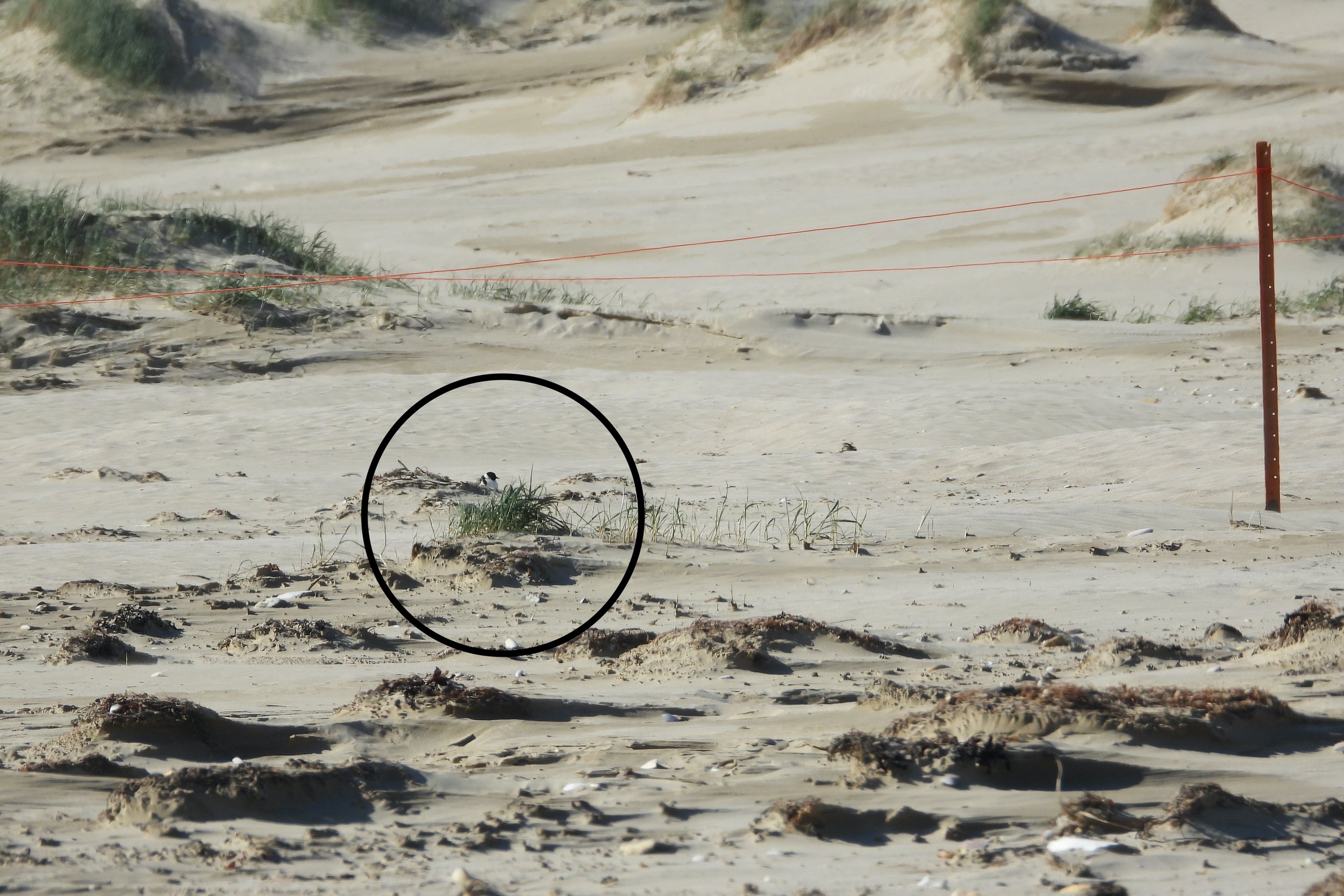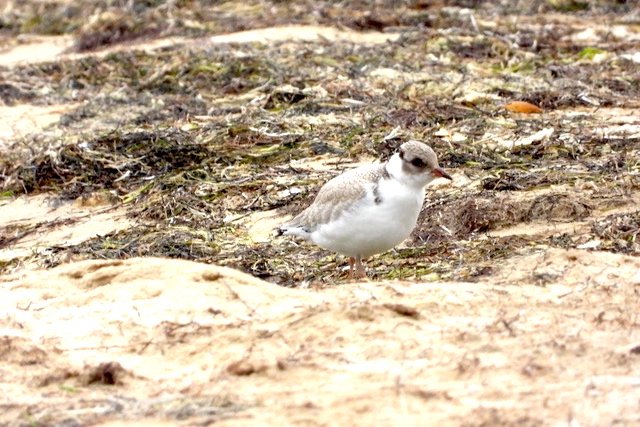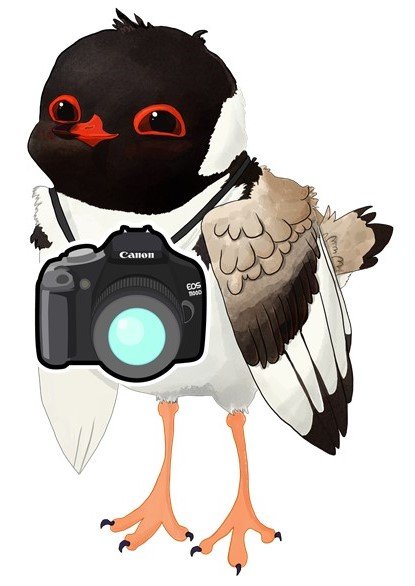
Hoodie Diary
Follow the fortunes of our Sandy Point Hoodies as they negotiate all the perils of the 2023 - 2024 breeding season.
-
This 40 day old Hoodie chick took to the skies with its parents for the first time on Friday (8th Dec), Sandy Point’s first fledgling for this season. We are thrilled since breeding success rate at Sandy Point is estimated to be less than 2%.
In August this pair (unbanded and XP banded 6th Dec) took up their territory on the sand-spit. Housekeeping started in September with serial scrapes, interrupted by scrapping with visiting Hoodies H. In late September the pair started incubating 3 eggs in their nest which consisted of a shallow depression in the middle of the flat shingle 100 metres behind the ocean beach.
Multiple extreme weather events threatened the nest including gales, scouring sand and prolonged heavy rain. 2 of the 3eggs survived nearby passing horses, humans with unleashed dogs, foxes and natural predators.
The single chick which hatched at end October after 32 days incubation was then thought to have perished when exceptionally high tides inundated this part of the spit, however the tiny, recently hatched fluffy chick was observed several days later foraging for itself on the beach beside its parents.
Throughout November and into December the parents remained ceaselessly vigilant, dealing aggressively with all intruders perceived as a threat to the chick while foraging over a wide area extending several kilometres.
3½ months has now passed since start of this pair’s territorial behaviour in their first breeding attempt this season, monitored for many hours each week via binoculars which provide a window into their world as they go about their lives. The chick was not seen making any practice flights or even wing-stretching, and was still noticeably smaller than its parents right up to day 40 from hatching date. All 3 were observed foraging as usual on the beach on Friday, alert to predators flying overhead; they then took off together heading out over the water and flew along the spit to relative safety in the far distance.
Fly high, little one, see you around.
[Thanks to Stephen Johnson for advice, support re fencing, and for banding 4 birds so far this season. including XP, which assists BLA volunteer monitors figure out which of the 9 currently known breeding pairs is doing what, with whom, and where on the SP sand spit. ]
Report and photos: Wendy Hayes,
BLA Volunteer Monitor
Video: Hoodie parent fending off a seagull
-
Five Hoodie chicks had hatched on the SP spit at the end of February - only one survives! Recreational beach-users who share the Hoodies' home can take steps outlined below to help this chick survive past Easter when it will be old enough to fly from danger.
Hooded Plover parents send their flightless chick in to hiding when a threat approaches (including people on foot, bike or horse ) so it cannot forage and stays motionless till the threat is gone. The chick feeds itself, ranging from waters-edge to debris and weed at the top of the beach.
The chick’s parents are constantly vigilant to protect against natural predators such as ravens, magpies and gulls, our presence distracts from this.
This little family forages 1.5 km along the ocean beach from Designated track towards Wilson's Prom, and past the rope-fenced nest area across the spit to Shallow Inlet.
Please heed BLA signs, don’t linger, stick to water’s edge and always leash your dogs.
PS. The pair featured in the last newsletter (with the first SP fledgling in December), hatched two chicks several days earlier than the trio in these photos - one of which survived till the week before Easter.
Report and photos: Wendy Hayes, BLA Volunteer Monitor
Everyone can help
Photographers can help
Horse riders can help
Extract from Birdlife Australia, Taking conservation by the reins: How horse riders can help save the Hooded Plover.
Find out more at https://birdlife.org.au/programs/beach-nesting-birds/
Contact kasun.ekanayake@birdlife.org.au if you are interested in becoming a BirdLife Australia volunteer monitor.







